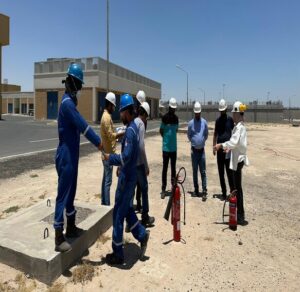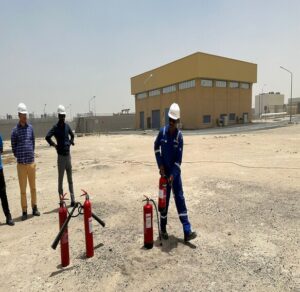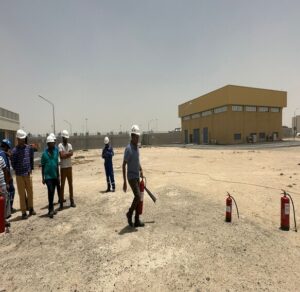
UAE +971 56 1 55 44 66 – Kuwait +965 51 38 38 68 – Oman +968 92827852
UAE +971 56 1 55 44 66
Kuwait +965 51 38 38 68
Menu

UAE +971 56 1 55 44 66 – Kuwait +965 51 38 38 68 – Oman +968 92827852
UAE +971 56 1 55 44 66
Kuwait +965 51 38 38 68
We provide comprehensive fire safety training for corporates. For support with more advanced training requirements or to inquire about on-site training, please contact us.
Upon completion of the fire safety training, you will:
Fires are the second leading cause of death worldwide, underscoring the critical importance of fire safety training. The National Fire Protection Association (NFPA) reports that in the United States alone, over 3,000 people lose their lives and an additional 16,000 sustain injuries annually due to fires. Given that a fire can occur anywhere, anytime, it is vital to equip employees with basic fire emergency response skills. Fire safety training is an essential component of workplace safety and a fundamental part of any company’s health and safety plan. The primary objective of this training is to educate employees on how to effectively respond to a fire emergency.
Every employee must be knowledgeable about fire response procedures to act swiftly and potentially save lives. As our world becomes increasingly interconnected, the risk of fire incidents rises. Fires can ignite and spread rapidly in any environment, emphasizing the need for serious attention to fire safety. Ensuring that all staff members have a fundamental understanding of fire dynamics and emergency actions is crucial. Fire safety training should be compulsory for all employees, irrespective of their role within the organization. This training can be the deciding factor between life and death. The significance of fire safety training cannot be overstated. It is a vital part of any organization’s safety strategy. Providing employees with the opportunity to participate in fire safety courses is the best way to ensure they are well-informed about this critical issue.
Everyone from entry-level staff to senior management should participate in fire safety training. Understanding fire risks and emergency procedures is essential for every individual in the workplace.
Those responsible for workplace safety need to have an in-depth understanding of fire safety protocols and procedures to lead and manage emergency situations effectively.
Employees who manage and maintain the building's infrastructure should be trained in fire safety to ensure they can identify potential hazards and respond appropriately in case of a fire.
HR and training managers should be equipped with fire safety knowledge to integrate safety protocols into company policies and training programs.
Designated emergency responders must undergo rigorous fire safety training to coordinate evacuation plans and assist during emergencies.
Designated emergency responders must undergo rigorous fire safety training to coordinate evacuation plans and assist during emergencies.
The fire safety training we are conducting in Dubai, Sharjah, and Abu Dhabi is an invaluable component of any company’s health and safety plan. This training ensures that all employees are prepared to act swiftly and effectively in the event of a fire, thereby enhancing overall safety and potentially saving lives.
Fire safety training provides workers with the expertise and abilities needed to handle a fire emergency efficiently.
Effective training helps employees recognize possible fire risks and understand how to prevent them.
When staff are trained in fire safety protocols, they become more assured in their capacity to manage emergency situations.
Fire safety training aids in reducing or preventing damage to property and asset loss.
Reducing or avoiding fire incidents through training leads to cost savings on property damage, insurance costs, legal claims, and business disruptions.
Employees who receive fire safety training are skilled in using fire extinguishers and other firefighting tools properly. This can assist in containing small fires before they grow.
Importance of fire safety awareness, Statistics on fire-related incidents and their impact
Identifying common fire hazards in different settings (home, workplace, public spaces), Best practices for preventing fires, including proper storage and handling of flammable materials
Types of fire extinguishers and their appropriate use (e.g., water, foam, CO2, dry chemical), Hands-on training in using fire extinguishers, including the PASS technique, Overview of other firefighting tools (fire blankets, hose reels, fire hoses)
Developing and practicing evacuation plans, Understanding the importance of clear escape routes and assembly points, Roles and responsibilities during evacuations
Understanding different fire alarm systems and their signals, Responding appropriately to fire alarms
Workplace-specific fire safety protocols and procedures, Fire safety roles and responsibilities within an organization
Understanding appropriate firefighting methods for different types of fires, Practical demonstrations of fire suppression techniques
Recap of key concepts and techniques covered, Written or practical assessment to gauge understanding
Knowing who to contact in case of a fire emergency, Reporting fire hazards and incidents






